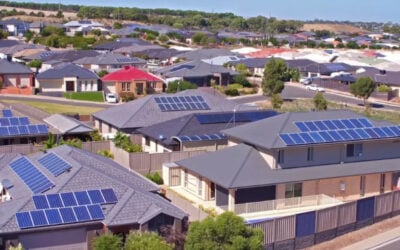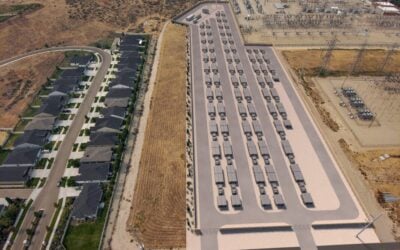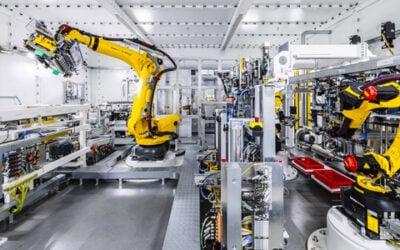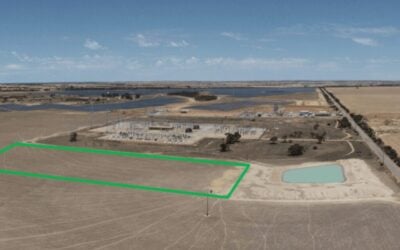The Nevada Gigafactory, which Tesla says is so far only 30% of the final size it could reach by 2020. Image: Tesla.
Tesla and Panasonic’s Gigafactory in the Nevada desert has now started making high performance cylindrical battery cells of the type used in its stationary storage and forthcoming Model 3.
Ahead of the availability of the Model 3, the 200 mile+ charge ‘affordable’ car expected later this year with a claimed 400,000 pre-orders, the factory – which will have the largest footprint of any building anywhere when completed – began producing the cells yesterday. It had already been producing battery packs for Tesla’s Powerwall 2 residential storage and Powerpack 3 commercial and industrial scale storage solutions, but has now also added the capability to mass produce the so-called 2170 cells, which go in the battery packs and which it has been making in a “qualification” phase since December.
Enjoy 12 months of exclusive analysis
- Regular insight and analysis of the industry’s biggest developments
- In-depth interviews with the industry’s leading figures
- Annual digital subscription to the PV Tech Power journal
- Discounts on Solar Media’s portfolio of events, in-person and virtual
Tesla did point out however that while the cells will go straight into Powerwall 2 and Powerpack 2 systems, they will not be ready for the US$35,000 Model 3 until the second quarter of this year. The company said that by 2018 the Gigafactory will be producing 35GWh of battery packs a year. Future expansions should take the facility up to 50GWh a year by 2020, according to the original plans announced in 2014. This would equate to 500,000 car battery packs. Research firm Baird Equity Research said in a note that it appeared Tesla was therefore also on track to achieve a more than 30% reduction in battery cell production costs as the factory ramps up into 2018, through better design, leveraging consolidation of supply chains and the vertical integration the Gigafactory enabled.
The 2170 lithium-ion cell has been jointly engineered by Tesla and Japan’s Panasonic, which also makes its own stationary storage products for markets including Australia. Panasonic is thought to be making a US$1.6 billion investment in the Gigfactory, which Tesla CEO Elon Musk has claimed could help Tesla rake in US$20 million a year in revenues and US$5 a year profit from Model 3 sales.
Following the approval of a plan to buy out US solar leasing company SolarCity, the solar, energy storage, EV – and with the launch of the Tesla-SolarCity solar roofing shingles – construction industries await to see how the merged entity will utilise what analysts called a “powerful position” as a complete energy solution provider to markets in the US and beyond.
How the factory could look in 2020. Image: Tesla.






